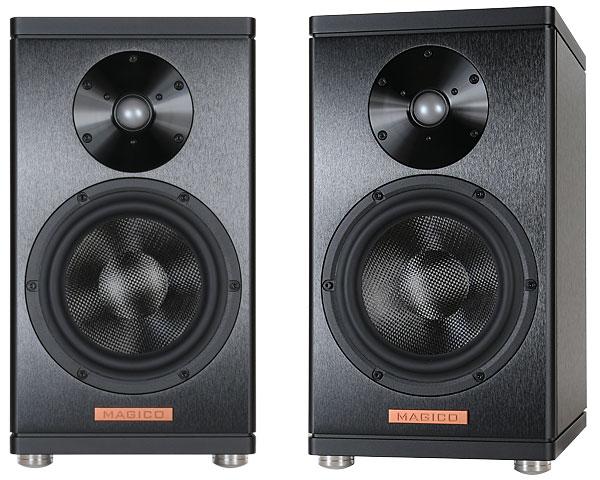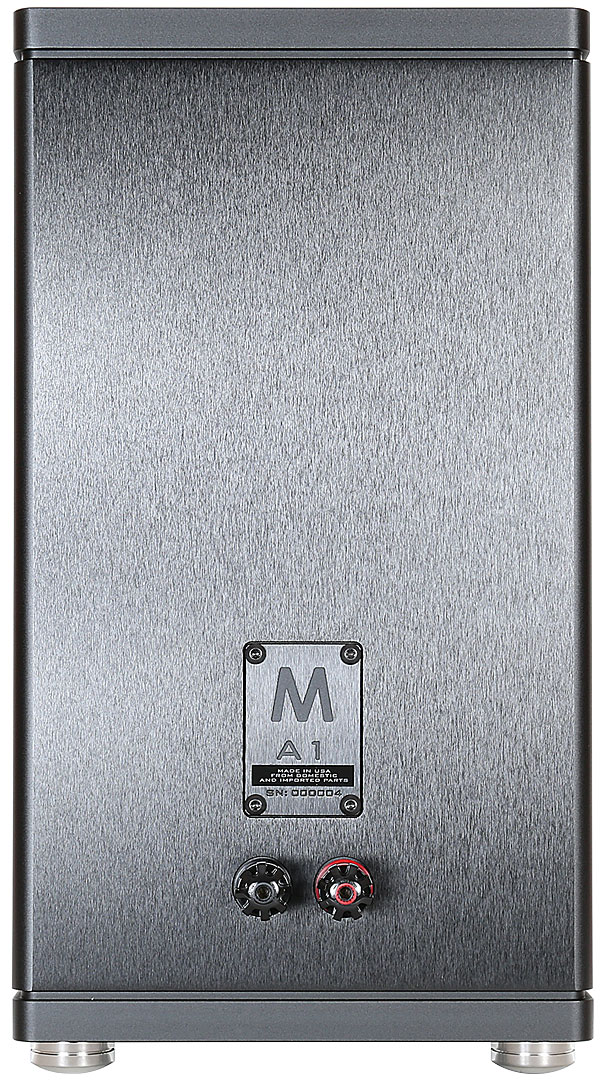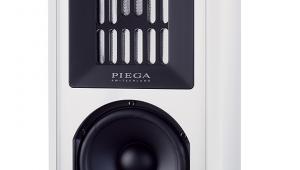Magico A1 Loudspeaker

 More than a chip off the Magico block, the A1 sets the standard for pint-sized standmounts
More than a chip off the Magico block, the A1 sets the standard for pint-sized standmounts
Chalk and cheese. Night and day. Or perhaps David and Goliath... Call it what you will, but the transition between Avantgarde's huge, horn-loaded Duo Primo XDs departing my listening room, and the diminutive A1s arriving, demanded a recalibration of reality. Just 20kg versus 185kg per enclosure and a drop of 20dB in sensitivity – so the volume control on our resident dCS Vivaldi One DAC/preamp also needed a reset from 500mV output to 6V.
In truth, Alon Wolf, Magico's CEO and guiding light, is partial to high-end horns himself, as the brand's all-alloy, all-active, five-way Ultimate served to illustrate. This statement piece is now discontinued, but those who experienced the Ultimate will not easily forget its 'presence'. Yet this review is devoted to another all-aluminium speaker that's arguably closer to Magico's core design ideals and, at 395x216x268mm (hwd), also somewhat more practical to unpack, install and enjoy.
High-End Gateway
This small but dense little loudspeaker marks the gateway to Magico's A-series and to the brand as a whole. It was inspired by the Q1 standmount (the Q7 floorstander and partnering subs are the only Qs still in production) but at a fiver under ten grand, is rather more accessible than its £35,000 mentor. The latter did come with a matching stand while the A1 is supplied with four turned alloy feet and mere suggestions of specialist stands or desktop plinths you might consider. For the purposes of my listening, I used a set of lead shot and sand-filled Partingtons that are nearly as old as my career in hi-fi, but they are no less sturdy now than they were over 35 years ago. Unlike me...
All Magico designs are infinite baffle/sealed box types, but the absence of a reflex port in this compact enclosure not only improves its transient behaviour but also ensures it's all but agnostic about room positioning. Furthermore, while the A1 is the most affordable Magico, it's not lacking in sophistication or stripped of all the brand's signature features.
Nevertheless, to achieve the necessary economy of scale, the A series is not built in-house but at an approved facility with significantly greater anodising, grinding and CNC capacity. Wherever they are built – 'not California' says Alon Wolf – the standard of construction and finish remains truly exceptional.

The A1's cabinet is not a tubular extrusion but comprises six machined aluminium panels bolted together from within (the final panel afixed through the baffle before the mid/bass driver is installed). These are 9.5mm-thick slabs of 6061 T6 'aircraft grade' aluminium braced and reinforced by three additional aluminium sections connected to the top and bottom panels and midway up the enclosure. These extra panels are clearly visible in the cutaway shot.
Magico's costlier enclosures employ constrained-layer damping – a sandwich of aluminium and a lossy polymer layer that converts vibration to heat. As one concession to cost, none of the A series has these layers, but with panel sizes as small and (relatively) thick as the A1, any such additional damping is rather less critical.
The A1's drivers and crossover are all culled from Magico's development of its costlier ranges. That extremely lightweight and rigid beryllium tweeter – shared across the A1, A3 and forthcoming A5 – uses the same 28mm dome as the high frequency drivers in its M-series, albeit without the 'diamond coating'. The motor system is slightly simpler, but is still based on a neodymium magnet assembly and 28mm voice coil, and the driver as whole is now loaded into an improved absorptive rear chamber.
Graphene Galore
The 165mm bass/mid driver is specific to the A1. It employs an overhanging 39mm titanium voice coil equipped with a copper shorting ring (reducing coil inductance at HF), within a double-ferrite magnet system. However, the real star of the show is the composite design of the driver itself – a 'multi-wall carbon fibre cone' that promises the ideal combination of very light weight with maximum stiffness.
The cone is a sandwich of two carbon fibre layers in front and a single layer behind, separated by a vibration-killing Rohacell filling. Only once the laminate is assembled is a further layer of 'XG Nanographene' embedded into its surface, contributing significantly to the stiffness of the cone. Graphene is a one atom-thick lattice of carbon, a 2D structure that's claimed to be 100x stronger than steel with the ability to conduct both heat and electricity with greater efficiency than any metal. Roll this sheet into a cylinder and you have a Graphene nanotube [see Opinion, HFN Sept '14].
![]() A Little Magic
A Little Magic
All good little loudspeakers have the capacity to shrink further from view as the music takes over, but only the great ones, the Magico A1 included, positively vanish. So as the sound of Carman Lundy's voice filled the room [Self Portrait, rip from a JVC K2 CD; VICJ-5152] I knew I was in for a treat. Here the piano, percussion and string section blended in a way that was both insightful and subtle, every little twist of vocal and splash or brush of cymbal punctuated by ivory to exquisite effect.
























































